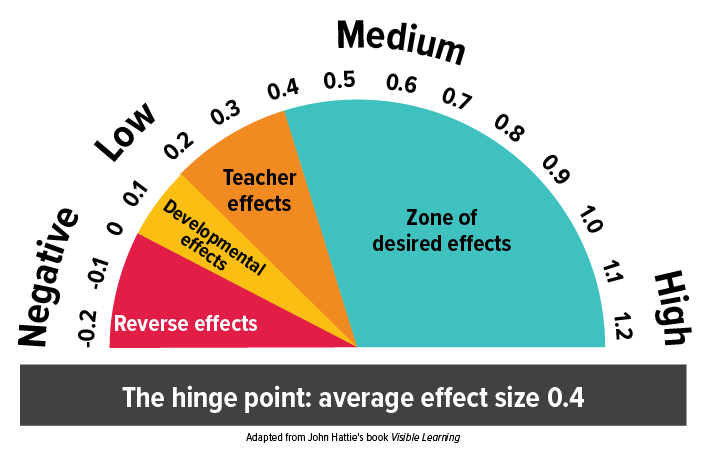In my first article for this series, I discussed the critical importance of efficiently using classroom time, noting that teachers often struggle with being too busy. Based on a number of studies I’ve read, a typical school day is broken down into about 50% seat work, 35% instruction time, and 15% non-instruction time. That means the amount of time teachers actually spend delivering instruction is rather limited. For this and many other reasons, it’s important that teachers spend their instructional time efficiently, focusing on activities that deliver the most educational value.
I've noted that effect size can be used to determine best-practice approaches to teaching and ensure efficient use of instructional time. When considering effect size, one approach to delivering instruction stands out: teacher clarity, with a reported effect size of .75. That’s well inside the “zone of desired effects” described by John Hattie in his book Visible Learning; according to Hattie, the hinge point for the “zone of desired effects” is .41.

Teacher clarity is an instructional framework employing multiple strategies that are known to positively impact student achievement. This kind of teaching is purposeful, intentional, and well-organized. With an effect size of .75, it can double the gains in student learning. That means a struggling student, lagging a year behind his peers in reading, can make double the gains in a year of instruction. Talk about closing the gap!
So what does this framework of instruction look like? Here are seven key components to teacher clarity:
- Instruction begins by giving students a clear understanding of the learning expectations and helping them see what learning will look like when it’s achieved. (Hattie refers to this as making learning “visible” to the learner.)
- Teachers deliver explicit instruction on each targeted skill, strategy, or concept, often one derived from a national or state curriculum standard.
- Teachers model what they’re teaching using think-aloud strategies, engaging the student throughout the modeling.
- Teacher-guided practice happens in small groups where students collaborate, communicate, and think critically about tasks directly related to the skill, strategy, or concept being taught.
- Plentiful independent practice allows the student to demonstrate proficiency or mastery of the lesson’s expectation. (In this and the previous step, learning should become “visible” to the learner.) The teacher assesses each student’s level of proficiency through their performance, determining how much additional teaching and practice needed. In this way, practice becomes a type of formative assessment.
- Reteaching and more practice for those who need it.
- Ongoing and distributive practice applies the new skills, strategies, and knowledge.
Throughout this approach to instruction, students should continually receive high-value feedback on their performance. Properly delivered feedback has an effect size of .73.
In my next article, I’ll discuss the importance of feedback and examine good feedback practices. I’ll also peel back the onion and examine the multiple layers of teacher clarity, along with a discussion of how teacher clarity affects the teaching of specific skills.
Stay tuned to the Breakroom blog for the next installment in our series on effect size!


